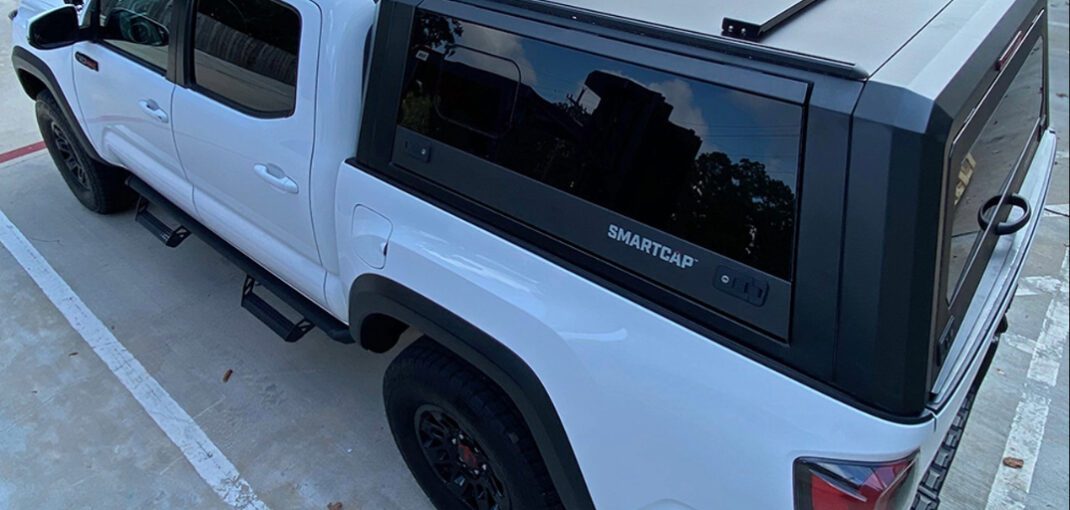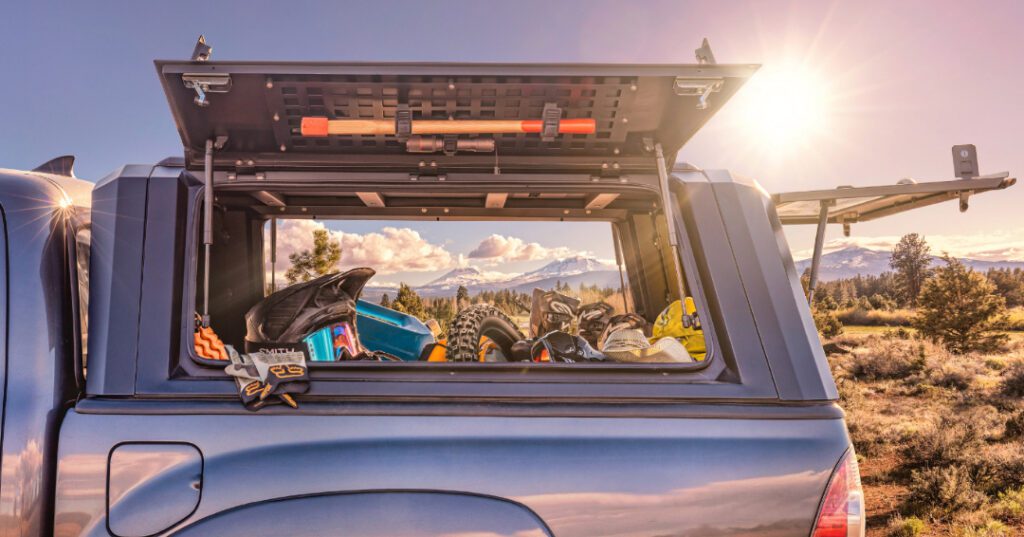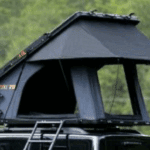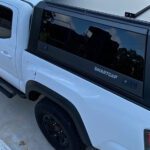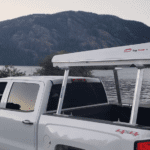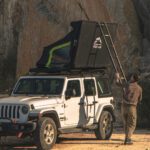If you drive a pickup in Canada or the USA, and you actually use your truck for hauling gear, camping, working, or overlanding, a truck canopy (also called truck cap, topper, camper shell) is one of the smartest upgrades you can make. It turns an open bed into a weatherproof, lockable, organized space. But not all canopies are built the same, and 2025 has way more options than just a painted fibreglass cap.
Below is a practical guide to help you pick the right canopy for your truck and your use case.
1. Start With the Use Case
Before choosing brand or colour, answer this:
- What am I doing with the truck? Daily driver, work truck, camping, overlanding, dogs?
- Do I need to stand/sit/sleep inside the bed? If yes, you probably need a mid‑rise or high‑rise.
- Do I need to mount stuff on top? Rooftop tent, awning, recovery gear, kayaks; then roof‑load rating matters a lot.
- Will I remove it often? If yes, modular / aluminum / stainless is better than heavy fiberglass.
That use case will narrow 80% of the decision.
2. Main Types of Truck Canopy
a) Fibreglass / Painted-to-Match The classic canopy matches the truck colour, looks OEM, quiet on the highway. Good for daily drivers, light camping, and keeping tools out of sight. Usually cab‑high. Limited dynamic load on the roof unless it has reinforced rails.
b) Aluminum / Commercial Lighter, often cheaper, very durable. Good for work trucks and guys who don’t care about paint match. It can be built with side doors. Sometimes noisier, not as pretty. Great for salty/wet conditions.
c) Modular Stainless / Overland Style (SmartCap, Alu‑Cab style) This is what’s trending right now. 5‑piece stainless or aluminum systems with gullwing side doors, internal reinforcement, and factory roof rails so you can bolt a rack or rooftop tent directly on top. Perfect for overlanding, fishing, dog setups, and anyone who wants to swap accessories later.
d) Canopy Campers / High‑Rise Adventure Shells These are taller, more expensive canopies that basically turn the bed into a mini camper. Great if you’ll sit or change clothes in the back. Common in the overland scene.
3. Height: Cab‑High vs Mid‑Rise vs High‑Rise
- Cab‑high: clean look, better aerodynamics, good for tools, dogs, everyday use.
- Mid‑rise: a bit more headroom, better for camping builds and totes. Popular for Tacomas because you can still park in most garages.
- High‑rise: best interior space, easier to change clothes or run a sleeping platform, but more wind drag.
If your 2025 plan includes sleeping in the bed, don’t cheap out; get extra headroom. That’s what most people regret later.
4. Materials & Durability
Canada and the USA = rain, snow, salt, gravel. So look at:
- Corrosion resistance (stainless and aluminum win here)
- Seal quality / weatherproofing
- Rear door and window hardware (cheap latches fail in winter)
- Glass vs solid panels. Glass is nice, but solid gullwings are way more practical for gear. SmartCap‑style units seal really well and are designed for all‑season use.
5. Roof Load: Static vs Dynamic
This is the big 2024 mistake. People buy a nice canopy and then realize it can’t hold a rooftop tent.
- Dynamic load = what you can carry while driving (RTT, kayaks, recovery boards)
- Static load = what it can hold when parked (people in RTT) If you want a rooftop tent or rack system, pick a canopy with integrated roof rails or internal reinforcement. Stainless / modular models make this easy.
6. Windows, Doors & Access
Think about how you’ll get to your stuff:
- Gullwing side doors → best for overlanding and work. Open the side, grab fridge/tools, done.
- Sliding side windows → good for dogs.
- Full rear door with window → good visibility, OEM look.
- No glass → more secure for tools. Pick the layout that matches your daily reach pattern, not just what looks good online.
7. Compatibility: Racks, Tonneau Covers, and Bed Accessories
Most canopies sit on the bed rails, the same place tonneau covers sit, so you normally can’t run both at the same time. If you want canopy + rack + maybe a tonneau‑style setup, look for systems designed to work together (SmartCap, Alu‑Cab, or bed rail systems like Retrax XR with racks). Otherwise, it becomes an either/or.
8. Vehicle Fitment
Newer trucks like 2025 Tacoma, 2024+ Silverado 1500, F‑150, RAM 1500 have updated bed sizes and rail systems, don’t assume a 2020 canopy will fit. Always check:
- Exact bed length (5.5 ft, 6.5 ft, 8 ft)
- Sport/step side vs regular box
- Factory rails / tie downs that might interfere Canadian shops like Cap‑It, 4WD/outfitter stores, and overland shops now stock 2024‑specific canopies and smart caps.
9. Price Ranges
- Basic aluminum / used canopy: budget / work truck
- Painted fiberglass: mid‑range (looks OEM)
- SmartCap / modular stainless / overland canopy: premium but future‑proof because you can add drawers, roof racks, camp modules later.
When people Google things like “cheap truck canopy Canada” or “used truck cap Victoria BC”, they usually want weather protection first, looks second. So match the price to the job, don’t buy a $5,000 canopy to carry rakes.
10. Red Flags to Avoid
- No roof rating listed, but you want to carry a tent.
- Poor sealing around the tailgate (dust and water will get in).
- No dealer/install support in your area.
- A brand that doesn’t list 2025‑specific fitment yet.
11. How to Choose
- Decide your main use (work, dogs, overland, camping).
- Pick canopy type (fiberglass for looks, aluminum/stainless for strength).
- Make sure it has the roof rating you need.
- Choose access style (gullwing vs windows).
- Confirm it fits your exact 2025 truck bed.
Need help? Here at Kermode, we’re a Vancouver Island–based business that lives in this camping/overlanding world every day: rooftop tents, awnings, bed racks, portable fridges, recovery & more. We’re planning to bring in more smart‑cap/overland‑style canopies next season, so if you’re trying to figure out what will actually fit your truck (and hold a tent), just give us a shout at 1‑250‑740‑1844 and we’ll walk you through it.

